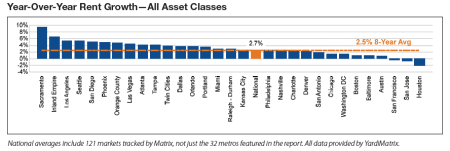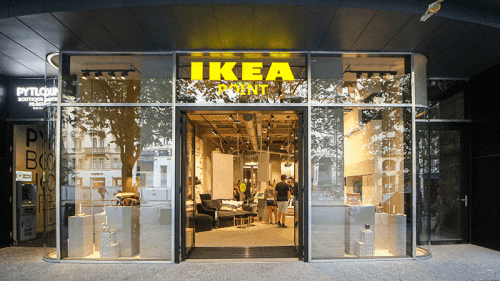After a lackluster winter, U.S. rents posted solid gains in March, according to Yardi Matrix’s monthly survey of 121 markets, although the rate of growth continued to decelerate. Average monthly rents rose $6 to $1,312, with the largest rent growth seen in California’s Sacramento, Inland Empire, and Los Angeles markets. On a year-over-year basis, rents were up 2.7 percent nationwide in March, down 10 basis points from February and exactly half the 5.4 percent growth rate of a year ago.
March’s performance marked the first monthly increase in five months and the most significant gain since June, when rents also rose 0.5 percent month-over-month. Rents overall were flat in the seven months between July and February. To some degree that is seasonal, since spring typically ushers in higher rents because tenants tend to move more as the weather improves, but the slowdown also reflected the effect in some markets of the growing supply pipeline and issues of affordability.
But March’s numbers do not change Yardi’s basic view of the U.S. apartment market. Rents are forecasted to moderate from the unsustainably high levels they reached at times in 2015 and 2016, but at the same time supply/demand fundamentals are healthy in most markets, and rents should rise in the 3 percent range for the year.
Among the issues the multifamily market will face this year is how demand reacts to changes in the economy. The Federal Reserve raised short-term interest rates in March, as the economy continues to produce 200,000-plus jobs per month, while the Consumer Price Index is topping the 2 percent target rate after an extended period of weak growth. Further healthy economic expansion could lead to more rate increases in 2017, which would raise borrowing rates and put pressure on historically low property yields.






